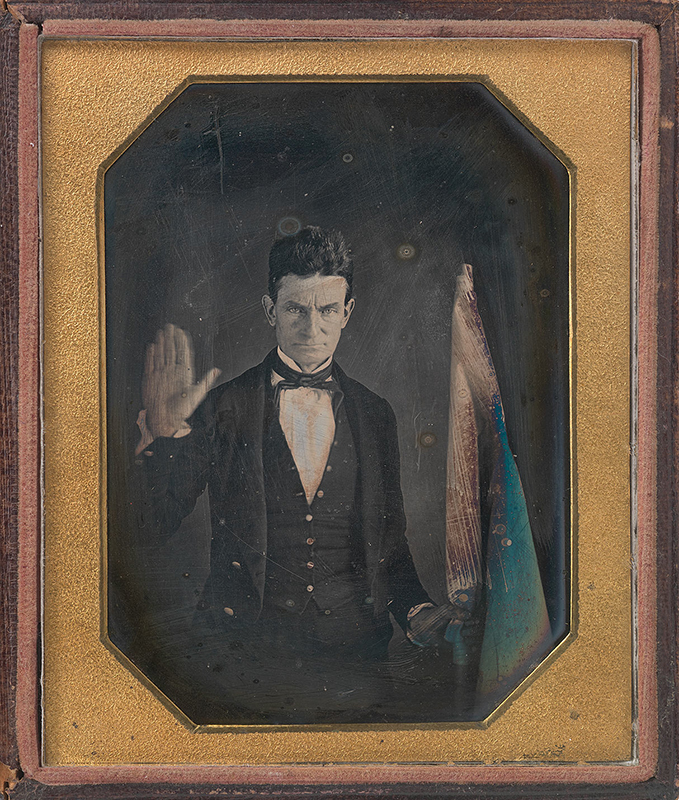John Brown (1800-1859), Daguerreotype

John Brown (1800-1859) | Born Torrington, Connecticut | by Augustus Washington, 1820/1–1875 | Quarter-plate daguerreotype, c. 1846–47 | National Portrait Gallery, Smithsonian Institution; purchased with major acquisition funds and with funds donated by Betty Adler Schermer in honor of her great-grandfather, August M. Bondi | NPG.96.123
African American daguerreotypist and fellow abolitionist Augustus Washington created the earliest known likeness of radical abolitionist John Brown. In a pose that dramatizes his antislavery activism, Brown stands with one hand raised as if repeating his public pledge to dedicate his life to the destruction of slavery. With his other hand, he grasps what is believed to be the standard of his "Subterranean Pass Way"-the militant alternative to the Underground Railroad that Brown sought to establish in the Allegheny Mountains more than a decade before his ill-fated raid on the arsenal at Harpers Ferry.
- List three adjectives to describe Brown. Why did you choose these three, and how are they reflected in the portrait?
- Look closely, describe the object Brown is holding and his related pose. What is the artist trying to say by placing Brown this pose, and holding this flag?
- Compare and contrast this portrait to Ole Peter Hansen Balling’s portrait of John Brown, from 1872. What sorts of conclusions can we make about Brown based on both images?